
- >
- Application Development >
- Waterfall vs RAD vs Agile – Which Method Is The Best For You?
Waterfall vs RAD vs Agile – Which Method Is The Best For You?
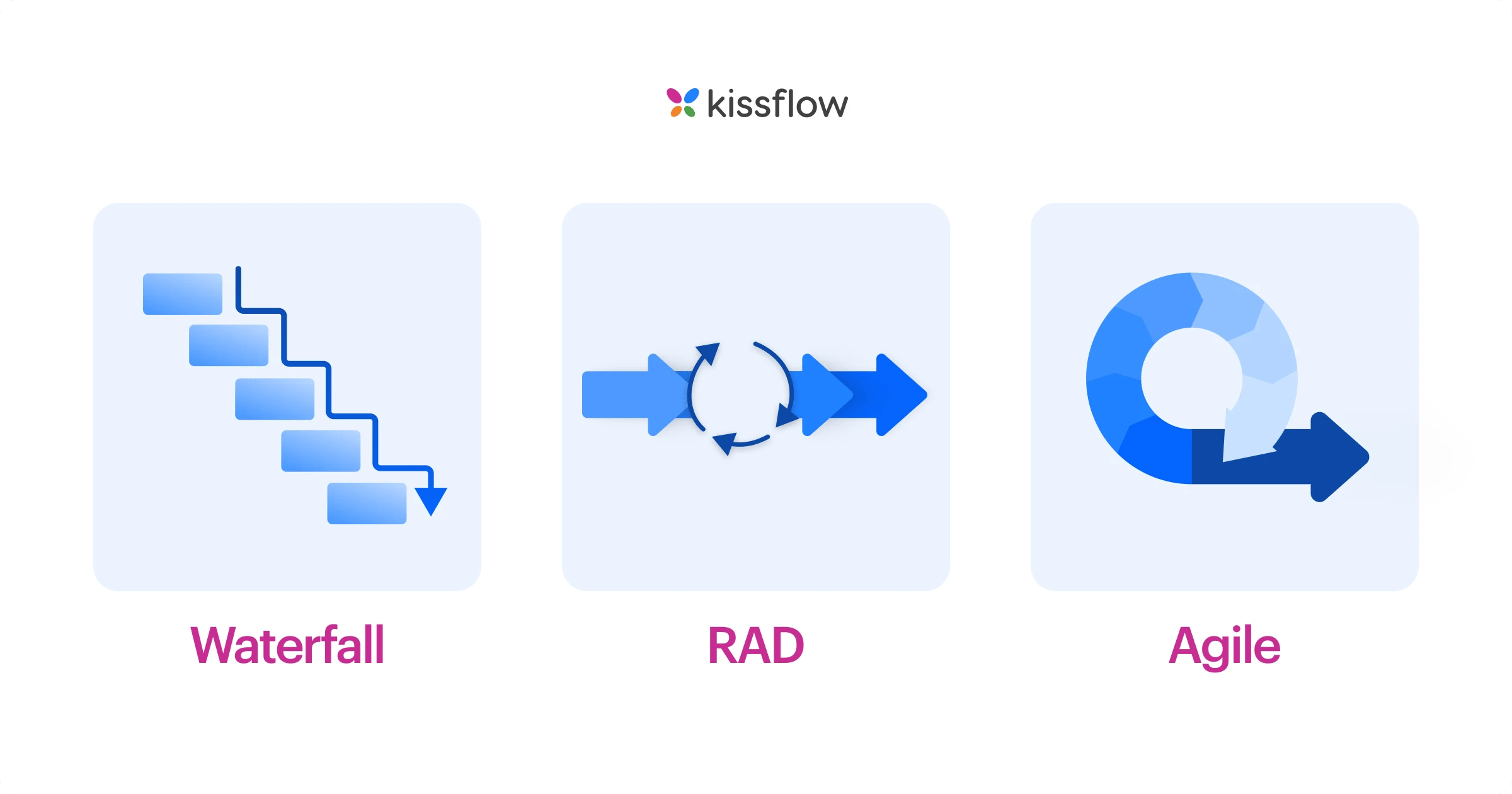
As software continues to develop at an overwhelming speed, it’s important to back it up, and look at how it’s made. Two of the most popular development methods are waterfall and RAD (Rapid Application Development). Here’s a good comparison of the two, along with some extra notes about how Agile development principles compare.
What is the waterfall model?
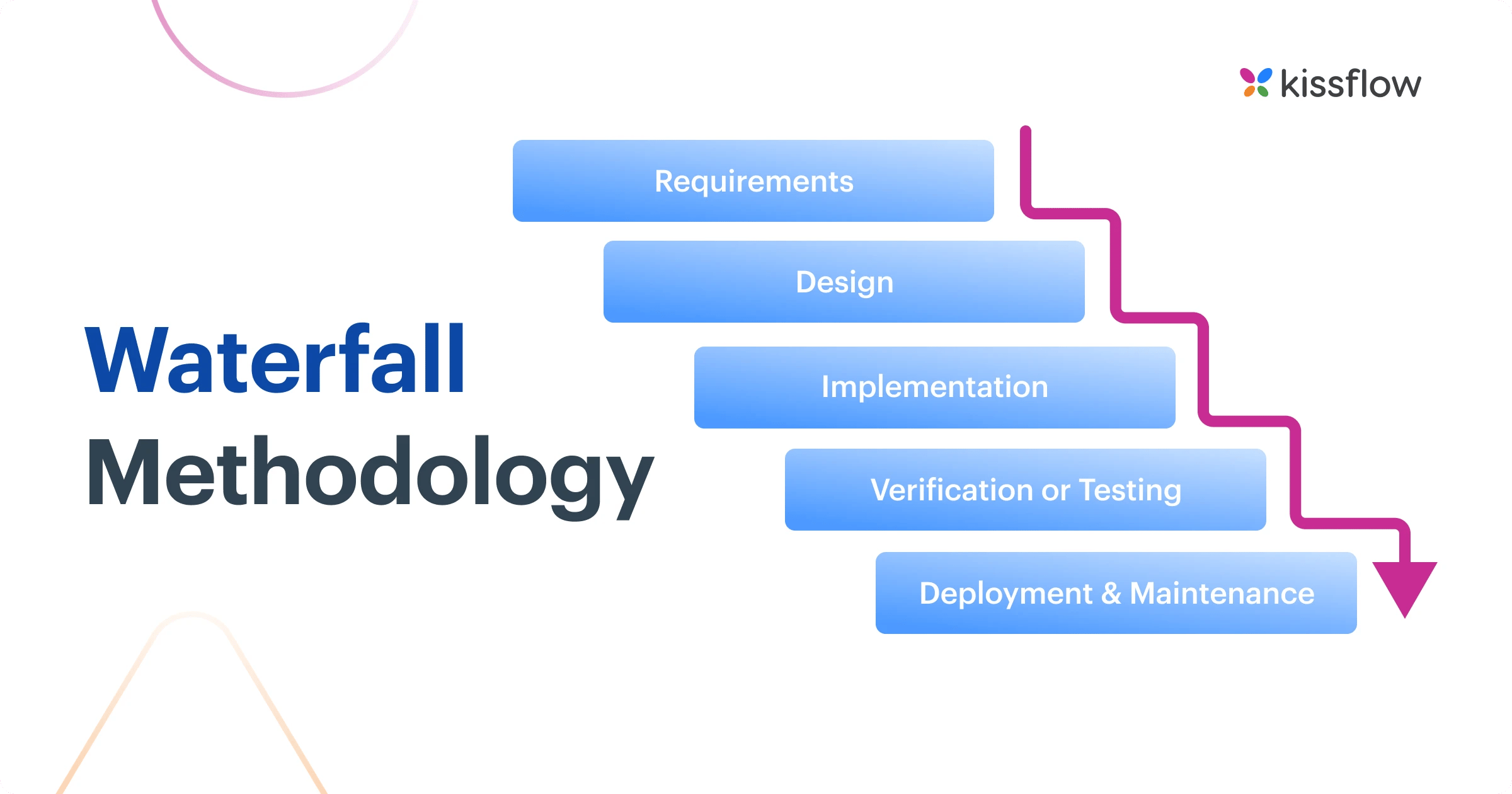
The waterfall model[1] of development was established many decades ago as a definitive way to approach engineering projects. Its name comes from the fact that progress flows down sequential steps.
Learn more: Best Enterprise Application Development Tools of 2025.
The engineering team will first meet with the client to discern all of the requirements. Then the engineers design a solution to meet the requirements. Next, they build the solution. Once it is ready, they take the solution back to the client for testing, and after fixing all the bugs, they deploy it and carry out scheduled maintenance.
Pros and cons of the waterfall model
Pros:
- Objectives are easy to translate and align to
- Enforces discipline and enables strict adherence to timelines
- Planning takes absolute precedence enabling predictability
- Testing specifications are predetermined
- Issues are identified early
Cons:
- Delivery times are typically longer
- Very rigid and may not allow for a change in direction
- Will require a hard restart if changes are significant
- Does not include the client or end user in the development process
What is the RAD model?
The Rapid Application Development (RAD) model is a software development approach that emphasizes rapid prototyping and iterative feedback loops to deliver functional software faster. By prioritizing user collaboration and adaptability, RAD tools reduces development cycles and ensures solutions align closely with evolving business needs. Ideal for custom application development and agile environments, this methodology helps organizations enhance time-to-market and streamline the delivery of high-quality software.
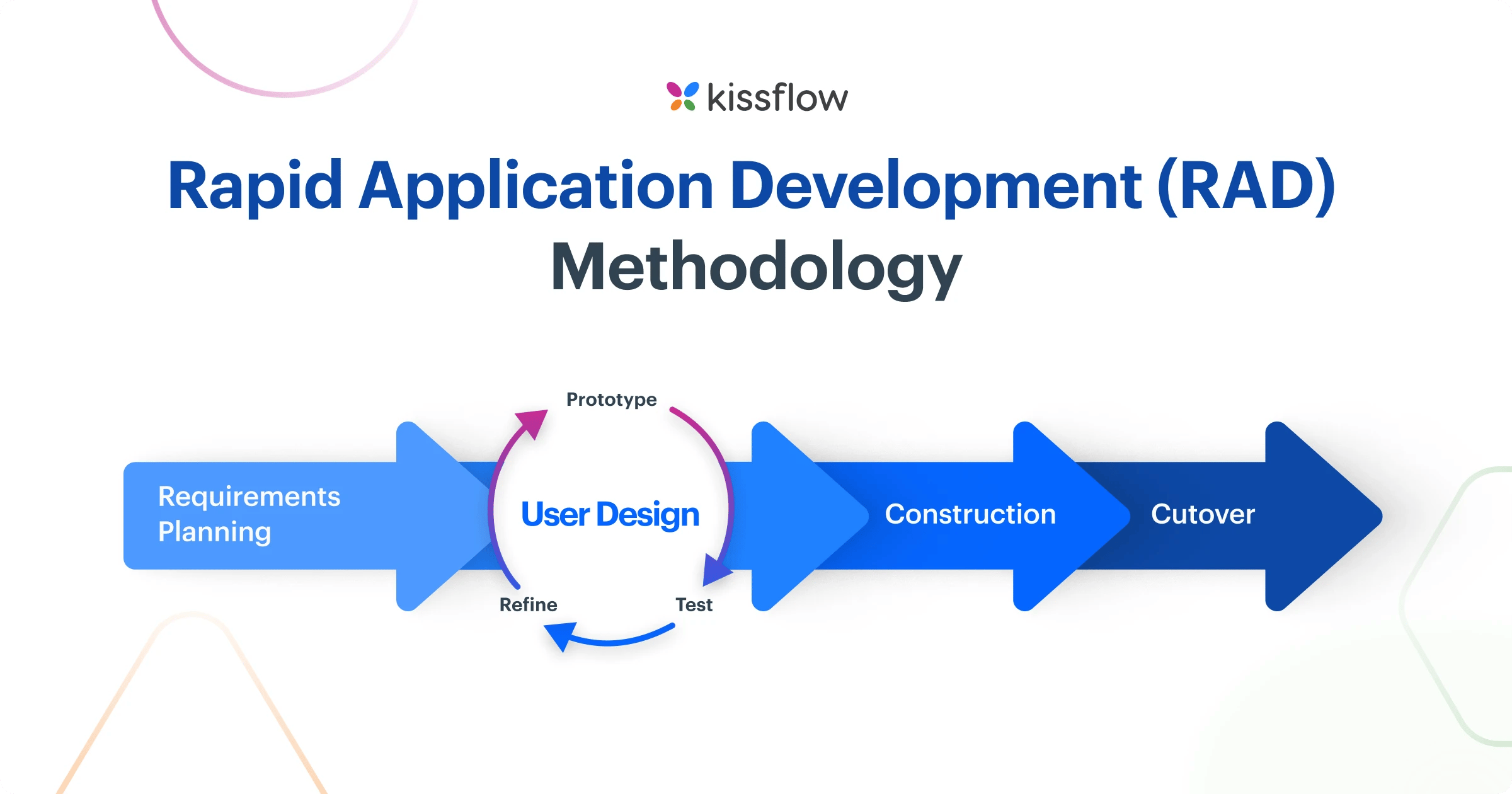
Pros and cons of RAD model
Pros:
- Significantly reduced development times
- Customization is easy owing to the segmentation of system components
- Easier to reach client consensus since they are actively involved in development
- Components are reusable
- Accommodates multiple changes in expectations, goals, and requirements
Cons:
- Relies heavily on a skilled team of developers and testers
- May not be best suited for projects requiring high sophistication
- Requires clients and developers to be in active collaboration
- Can only be used to build modularized systems
The four core concepts in RAD
- Reusable code in an accessible repository
- Quick prototyping
- Constant client feedback
- Building usable software as quickly as possible
The client and developer work together to create an end product that functions exactly as the client wants.

How to Choose an App Development Platform for Your Enterprise [ Checklist Included ]
Thank you for reaching us!
Thank you for reaching us!
Waterfall vs RAD: Which is better?
Although RAD is a unique model for software development, that doesn’t mean it’s always better. In fact, many developers still prefer the waterfall model. Here are several different factors that can help you choose which model is best for you.
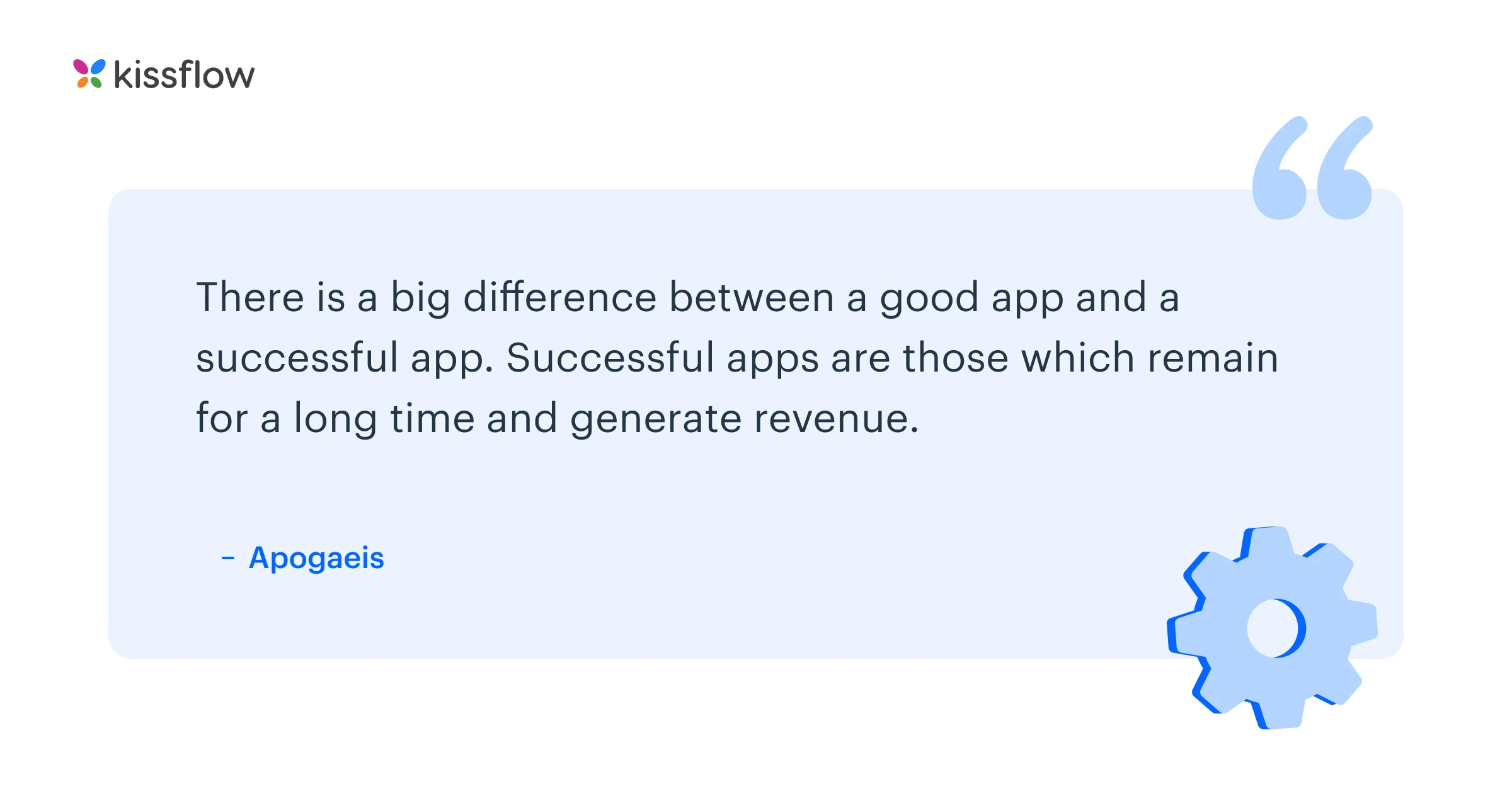
| Waterfall | RAD | |
|---|---|---|
| Time | Sticks to a planned schedule, needs to start back at the beginning if significant changes emerge | Open-ended, the project is done when the client is happy |
| Ideal Size of the Project | Very small and very large projects | Small and medium-sized projects |
| Developer Team Size | Can be small to large | Needs to be small |
| Developer Experience Level | Can be junior to senior if the specs are clear | Multi-talented, very experienced and flexible |
| Ideal Project Type | On-premise, desktop applications | Web-based, mobile apps |
| Ideal Client | Extremely hands-off, knows exactly what he/she wants from the beginning | Good communicator, open to suggestions, has the big picture, available |
| Worst client | Changes mind frequently, want to be involved all the time, scope creep | Inaccessible, indecisive, uninterested |
| Risk | Risk assessed at the beginning is accounted for, but not in the middle | Respond and prepare for risks continuously |
| Approach to change | Change is extremely negative | Change is welcome |
| Best time for changes | At the very beginning | Anytime |
| Project Management Style | Stick to the original plans and dates | Very adaptive, more like driving an elephant |
| Use of new technologies | No changes after specs are set | New changes can be brought in anytime |
| Feature Management | Every feature in the spec is built | Only features that prove to be useful are built |
| Updates and Versions | Planned and methodical | Ad-hoc and quick |
| Costs | Fixed costs, assuming no changes | Variable, depending on the number of iterations |
| Prototype | Delivered after the entire app is fully functional | Working model delivered as soon as possible |
Learn how industry leaders transformed with our platform.
What about RAD Vs Agile? Are they the same thing?
When you look at agile vs RAD, they are very similar concepts. Both are reactions to the standard waterfall method. The core element of RAD is to quickly design and deploy prototypes that are later updated and modified into production-grade code. RAD is also known as the agile model, where the software development lifecycle is divided into sprints.
The differences between RAD Model and Agile are still emerging, as they aren’t usually seen as conflicting. However, there are some key distinctions you can make.
|
RAD |
Agile |
|
Focused on building a working model of an app in the shortest time possible. |
Focused on breaking down the development cycle into smaller ‘sprints’. |
|
May demonstrate a working model to clients in the middle of development. |
Waits till the product or feature is completely built before showcasing it to the client. |
|
Build the easiest parts of the product first so as to showcase the working model as soon as possible. |
Addresses the most difficult feature/part of the product first. |
|
Prioritizes functionality over UI/UX. |
Considers UI/UX while the product is being built. |
Which one is right for you?
If you are considering waterfall vs RAD or even RAD vs Agile, the key questions you should ask have to do with the nature of the project and what kind of developers you have.
As clients, project leads, and developers become more skilled, there may be less of a need to follow the typical waterfall methodology. You can move to a more adaptive and faster means of development. But if your team is fairly inexperienced, relying on a traditional development model may be better in the beginning.
Kissflow's application development platform plays a significant role in RAD. It provides a user-friendly visual approach, allowing users and IT teams to build applications quickly and efficiently.
One of the main features of Kissflow is its low-code capabilities. Users can leverage pre-built, customizable code blocks to construct applications from scratch. This feature enables users to develop and modify enterprise-grade apps without extensive coding knowledge, making the process more accessible and efficient.
Furthermore, Kissflow platform is designed for swift prototyping and feedback during the development and testing phases, ensuring flexibility and efficiency. This approach keeps the app development process as fast as possible, a key characteristic of RAD methodology.
Discover how the Kissflow Low-Code App Development platform can streamline your development process.
Frequently Asked Questions
1. What are the key differences between Agile, RAD, and Waterfall?
Agile emphasizes iterative development with continuous customer feedback, flexible requirements, and self-organizing teams. RAD focuses on rapid prototyping and early user involvement but with less structured team dynamics than Agile. Waterfall follows a linear, sequential approach where each phase must be completed before the next begins, with comprehensive documentation and planning upfront.
2. What are the advantages and disadvantages of each methodology?
Agile offers flexibility and customer focus but can lack documentation; Waterfall provides structure and clear milestones but struggles with changing requirements; RAD delivers working prototypes quickly but requires highly skilled developers and constant client availability. Agile works best for evolving requirements, Waterfall for stable, well-defined projects, and RAD for time-sensitive applications needing rapid user feedback.
3. How do I choose the best development methodology for my business?
Choose your development methodology based on project characteristics—use Agile when requirements are evolving and customer collaboration is strong; select Waterfall when requirements are stable and well-documented; opt for RAD when time-to-market is critical and users can be heavily involved. Consider team capabilities, organizational culture, project complexity, and stakeholder expectations in your decision.
4. What industries prefer Agile over Waterfall?
Industries preferring Agile over Waterfall include software development firms, digital marketing agencies, media and entertainment companies, fintech startups, and e-commerce businesses. Organizations facing rapidly changing market conditions, evolving customer requirements, and technical uncertainty gain the most from Agile's adaptive approach and continuous feedback loops.
5. How does RAD compare to iterative development models?
RAD shares iterative development with other models but differs in its emphasis on working prototypes over documentation, more intensive user involvement throughout the cycle, less formal team structures than many iterative models, and greater use of specialized tools and reusable components. RAD typically has shorter iterations and more frequent deliverables than traditional iterative approaches.
Launch your app in no time with Kissflow work platform.
Related Articles


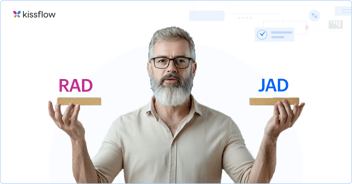
.webp?width=836&height=439&name=agile_methodology_for_mobile_app_dev%20(1).webp)









